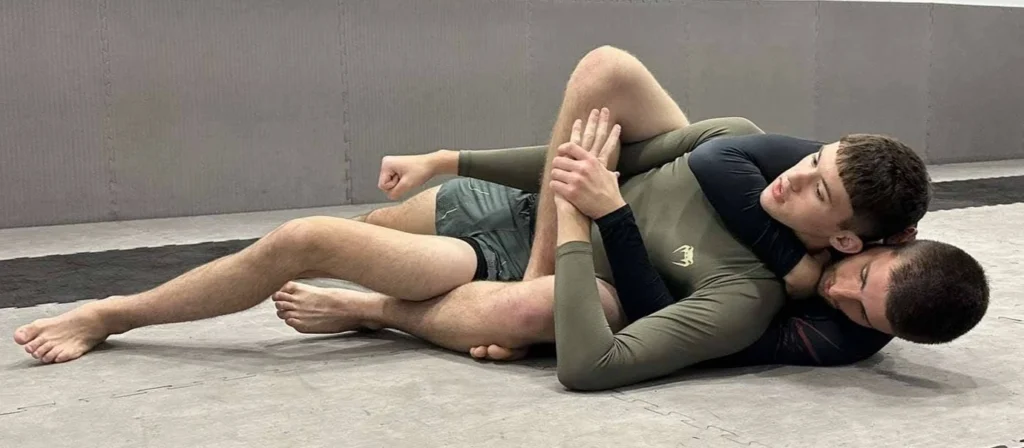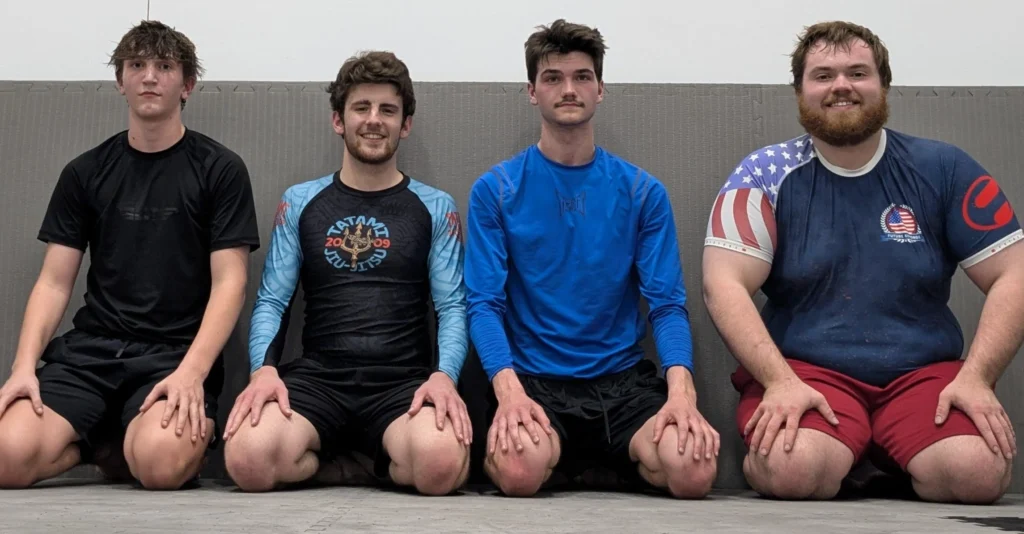
The Art of the Submission
Jiu Jitsu is the thinking man’s martial art. No other martial art uses understanding and intelligence to build skill to the degree Jiu Jitsu does. It is truly one of the few martial arts that delivers on the promise of allowing a smaller, weaker, skilled person to dominate a bigger, stronger, untrained person.
Jiu Jitsu is a form of grappling, which means we do not train with punches or kicks. Instead, we take our opponents to the ground and get to mechanically strong positions. These strong positions make our opponents weak, and allow us to finish the fight by breaking an opponent’s limb or cutting off blood to his brain. In training, rather than trying to damage our friends, we allow them to tap and give up. We call this a submission.
There are a lot of different positions in Jiu Jitsu, and knowledge of them and how to use them make a big difference in performance. Everything else being equal, the person who knows more will win a Jiu Jitsu match.
Because there is no striking, Jiu Jitsu is relatively safe to practice with full resistance. This allows us to take a scientific approach to training, in which we test for ourselves what works and what does not. This process allows you to add to your knowledge and build real skills that work in chaotic environments.
Adventure is Waiting in Rantoul
Take on an addictive hobby with a small group of friends, led by a blue belt coach. Start with a free, personalized trial class, and grow alongside us.

My Process
I am only a blue belt, but I put a lot of work into making sure our classes are high quality. My classes are built on research and focused positional sparring.
I start by picking what I am going to teach, usually based on some tactical consideration, i.e. what we need to improve to be as good as possible.
Jiu Jitsu has a rich culture of “instructionals,” in which the best grapplers in the world make videos about their techniques and strategies. I have a LOT of them. I usually skim 2-3, getting an idea of the concepts and techniques that everyone seems to agree are important. I add to my knowledge base by watching professionals use these techniques in competition, seeing what works for them and what they prioritize.
Next, I start building out my class. I decide what concepts I want to express, what I want beginners to learn, and what I want advanced students to learn. I weave each of these into the class content. As I build the class, I re-watch my instructionals to make sure I include the most important details.
The first times I give a new class, it is admittedly a little rough around the edges. By the end of the week, as I see what the guys are picking up on or getting confused by, I usually have the class streamlined and efficient.
I keep instruction short. We drill enough for me to see everyone gets the concepts, and then the real drilling comes from live positional rounds. Positional sparring is the bulk of the class, in which we really dig into the dirt and refine the techniques we learned. Every minute of focused, thoughtful positional work is invaluable to building skills in the sport.
We end the class with some live sparring, but not so much as to take a toll on the body.
Everyone in the gym has been seeing some significant skill gains as we go through this process. I’m always thinking about refining my process and becoming a better coach as time goes on, but this is the system right now.
